My first DnD 2.5d tile (puzzle room)
Nov 8, 2014 14:43:01 GMT
DMScotty, tauster, and 3 more like this
Post by sidewaysgts on Nov 8, 2014 14:43:01 GMT
My very first DnD 2.5d tile (not counting a small test tile i made from scraps). Been wanting to take a swing at these since I started watching Scottys and DMGs videos. This is one of the first ideas that came to mind, and thought Id share what I made
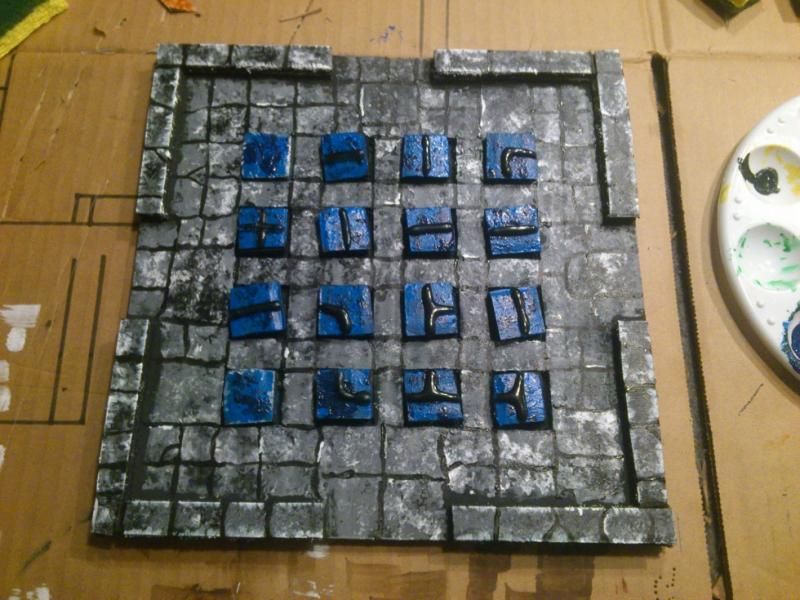
Its based on a type of puzzle Ive seen used in a few games, DDO getting an honorable mention here. Im missing 2 pieces but the concept itself is easy enough. There would be a "powered" stone, and an "unpowered" stone (Reserved for the bottom left and top left stones in this picture, so just pretend theyre there haha). The room is filled with magic tiles that the players may rotate- From a DM perspective id rule that it costs either a move or attack action to rotate a tile 90 degrees if the players are in combat, giving each player a chance to move a tile twice or divide their attention. Otherwise just let them solve it. Should a tile be rotated and connected to the powered stone..
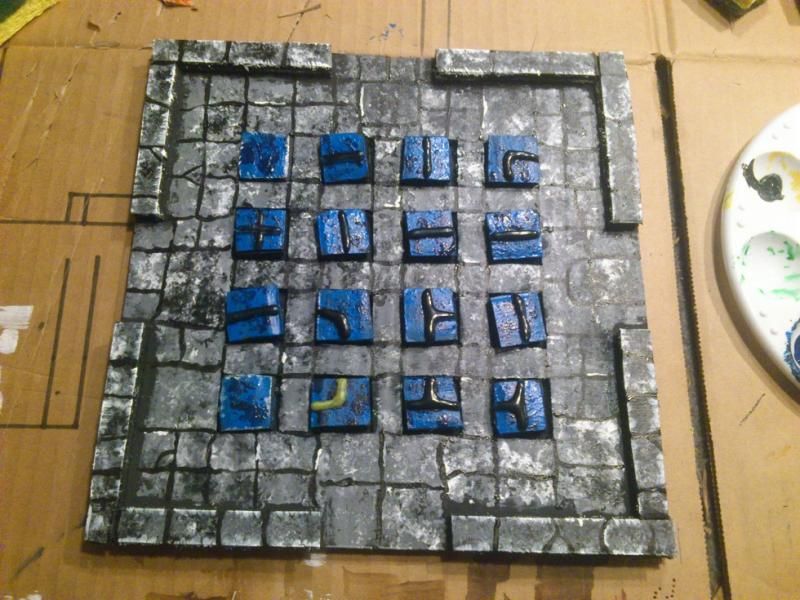
The tile activates and lights up with power, sending its power to every stone its pathway(s) connect to- Continuing down the line appropriately:
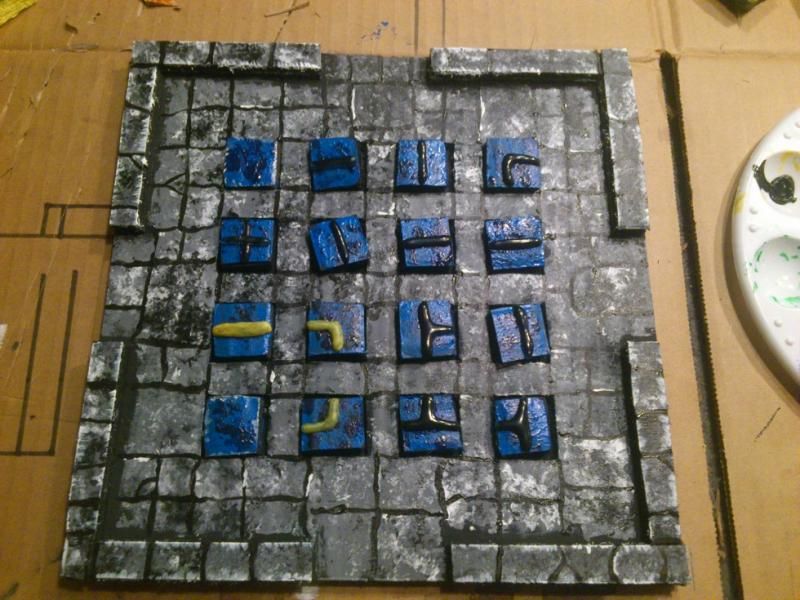
the goal being to rotate all the appropriate tiles around-
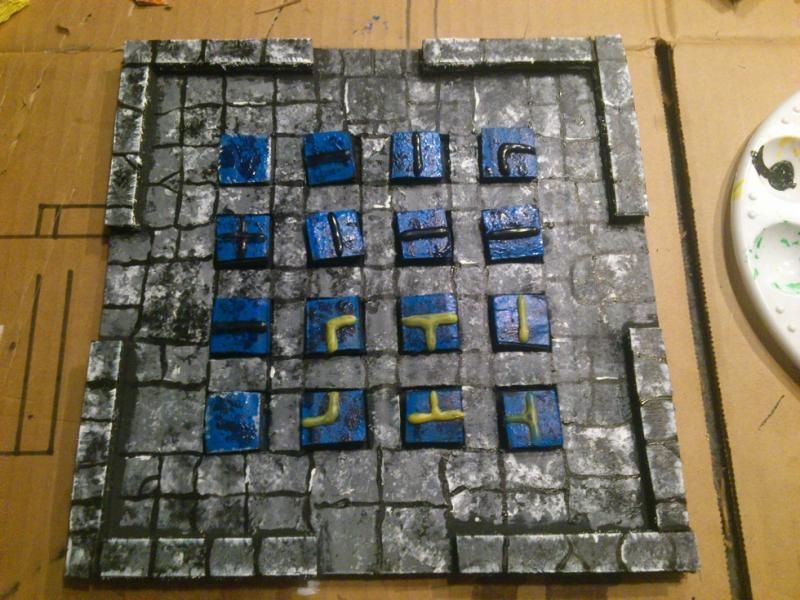
Until the players finally
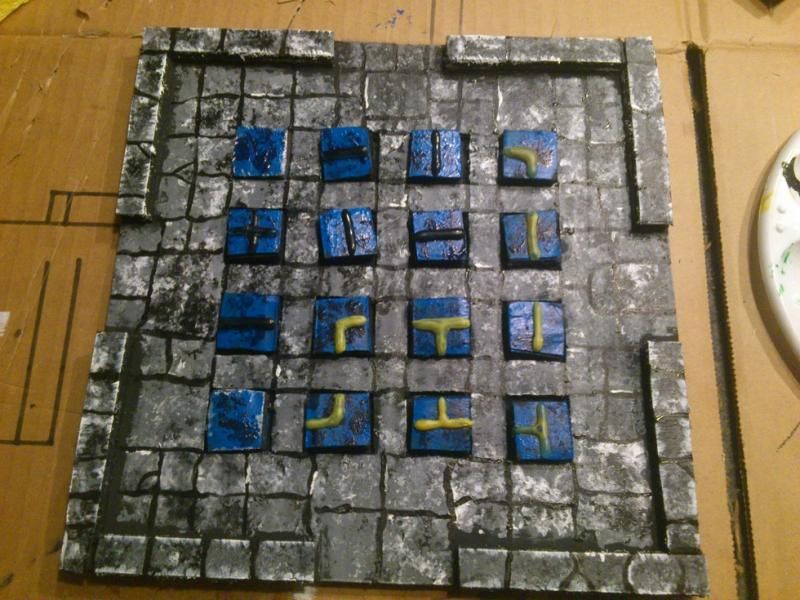
Connect the power to the "unpowered" tile
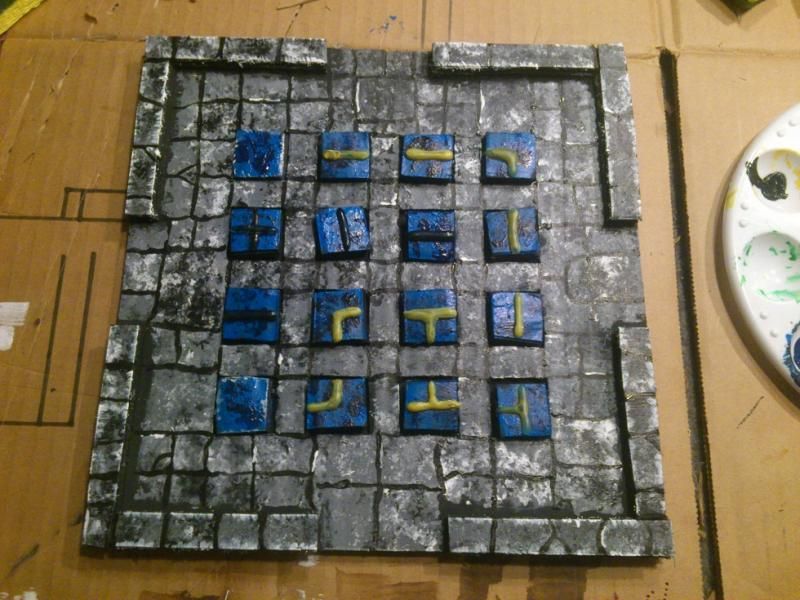
The square tiles are double corrugated cardboard, and the pathways themselves are made of hotglue. The room tile has a grid cut a single layer down into it- this way the double corrugated tiles stick slightly above the floor. This was done simply to make them easier to pick up by hand and rotate, instead of having to dig them out each time. Each tile is actually double sided, with the same hot glue pattern on both sides, this way once the tile becomes powered or unpowered, you can simply flip it over to show it in its powered state.
One thing I particularly like about this tile is how easy it is to change it up. Obviously the solution can be changed any umpteen different ways- but theres a lot of other possibilities too. Maybe the puzzle has multiple unpowered tiles (Dont have to have just 1!), and the players need to power both of the stones at the same time, maybe even power them up in a particular orde.. Or maybe one is a false stone that triggers a trap while the other is the goal. You also might note this tile has 4 doorways on it, this was simply to give me a bit more modularity to it. A LOT of my room tiles will be getting done in this fashion. My doorways are a particular width and I have pre-done wall sections that slot into the doorways to close them off (Painted the same as the rest of the walls). Sometimes they will be nothing but walls, other times they will be hidden passage ways. As Ill be doing this on the majority of my rooms, it stops the players from seeing it once off and going "Well obviously thres a hidden pathway here!". This lets me make this room a dead end room, with 1 way in and out, or maybe 2 ends are always open so the players can bypass this room all together should they choose to, making it so the solving the puzzle opens a locked door way (Or portal, to stop those pesky rogues from simply picking it). Though that "wall" on the otherside looks kind of peculiar...
You get the idea. Ive got dozens of ways this tile could be used in the game, and while itd be silly to overuse this tile, i know my players will never encounter it the same way twice! Hope you enjoyed!

Its based on a type of puzzle Ive seen used in a few games, DDO getting an honorable mention here. Im missing 2 pieces but the concept itself is easy enough. There would be a "powered" stone, and an "unpowered" stone (Reserved for the bottom left and top left stones in this picture, so just pretend theyre there haha). The room is filled with magic tiles that the players may rotate- From a DM perspective id rule that it costs either a move or attack action to rotate a tile 90 degrees if the players are in combat, giving each player a chance to move a tile twice or divide their attention. Otherwise just let them solve it. Should a tile be rotated and connected to the powered stone..

The tile activates and lights up with power, sending its power to every stone its pathway(s) connect to- Continuing down the line appropriately:

the goal being to rotate all the appropriate tiles around-

Until the players finally

Connect the power to the "unpowered" tile

The square tiles are double corrugated cardboard, and the pathways themselves are made of hotglue. The room tile has a grid cut a single layer down into it- this way the double corrugated tiles stick slightly above the floor. This was done simply to make them easier to pick up by hand and rotate, instead of having to dig them out each time. Each tile is actually double sided, with the same hot glue pattern on both sides, this way once the tile becomes powered or unpowered, you can simply flip it over to show it in its powered state.
One thing I particularly like about this tile is how easy it is to change it up. Obviously the solution can be changed any umpteen different ways- but theres a lot of other possibilities too. Maybe the puzzle has multiple unpowered tiles (Dont have to have just 1!), and the players need to power both of the stones at the same time, maybe even power them up in a particular orde.. Or maybe one is a false stone that triggers a trap while the other is the goal. You also might note this tile has 4 doorways on it, this was simply to give me a bit more modularity to it. A LOT of my room tiles will be getting done in this fashion. My doorways are a particular width and I have pre-done wall sections that slot into the doorways to close them off (Painted the same as the rest of the walls). Sometimes they will be nothing but walls, other times they will be hidden passage ways. As Ill be doing this on the majority of my rooms, it stops the players from seeing it once off and going "Well obviously thres a hidden pathway here!". This lets me make this room a dead end room, with 1 way in and out, or maybe 2 ends are always open so the players can bypass this room all together should they choose to, making it so the solving the puzzle opens a locked door way (Or portal, to stop those pesky rogues from simply picking it). Though that "wall" on the otherside looks kind of peculiar...
You get the idea. Ive got dozens of ways this tile could be used in the game, and while itd be silly to overuse this tile, i know my players will never encounter it the same way twice! Hope you enjoyed!







 Cheers!
Cheers! Cheers!
Cheers!